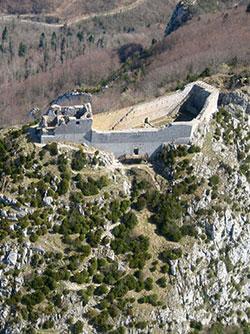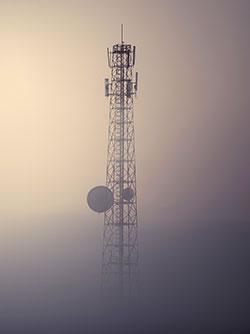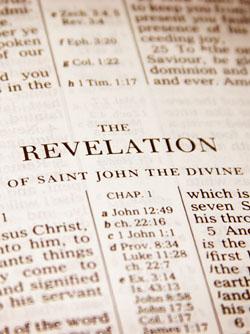Home, Sweet (Cosmic) Home!
All the reports and images we’ve received from the lunar landers, Mars rovers, Jovian orbiters, deep space probes and all other robotic explorers of our corner of the universe have carried the same message: It’s a mess out there. All of the planets and moons we have explored so far with our spacecrafts and rovers seem quite inhospitable. Every planet but one, that is: this beautiful world we call Earth.
Let’s take some time to appreciate the cosmic home our merciful Creator has established for us.
It’s easy to take our planet and its suitability for granted—after all, it’s all most of us truly know! But a brief tour around our solar system and the other planets that whirl in their orbits around the sun can help us appreciate it more fully by presenting us quite a contrast.
A Tour of Our Inhospitable Neighbors
Closest to the sun is the tiny planet we’ve named Mercury, and it is no home for mankind. You couldn’t breathe on Mercury, as it has almost no atmosphere at all. And even if you could, you wouldn’t want to stay for long: on the side facing the sun, the temperature is as high as 800°F, while on the side facing away from the sun it is as low as negative 280°F!
Further from the sun, but still closer than Earth, is the planet Venus. Covered in clouds and roughly the same size as Earth, you might be tempted to think that Venus could be earth-like. But you would be wrong! Covered in an oppressively thick atmosphere of carbon dioxide, the air pressure at the surface is strong enough to crush a nuclear submarine. And with a surface temperature even hotter than Mercury’s—more than 850°F—mankind would find no welcome in this bleak, hellish landscape.
The planet Mars promises more welcome temperatures—if you have a very loose idea of “welcome”! At its equator, the temperature of Mars can be fairly hospitable during the day—at up to 70°F—but you’ll want more than a blanket at night, when it drops to 100°F below zero. And while you’re busy freezing to death, don’t plan on breathing, since the atmosphere is 100 times thinner than Earth’s. Just as all the pictures we’ve received from our rovers on Mars would indicate, this is a dead planet, and no home for humanity. This planet man hopes to colonize one day is a wasteland.
As if that weren’t bad enough, the planets out further than Mars offer even less opportunity for a holiday! All of them are “gas giants”—vast planets that represent mostly billowing clouds of toxic gas in thick, smothering blankets that make them utterly inhospitable for human survival. Majestic Saturn and its astonishing rings may make for a wondrous sight in a telescope, but it would not be so wondrous to live there!
Yes, in our solar system it seems as though there is no hospitable place for mankind to live, at all, save for one: our beautiful Earth.
A Rare Cosmic Gem
And it is, indeed, a beautiful place! Our blue and green planet, teeming with life, stands out from all other known places in the universe as a perfect home for humanity. And this is only true due to some very fine-tuned conditions that point to a God who loves us and cares for us.
In their book Rare Earth: Why Complex Life Is Uncommon in the Universe, geologist and paleontologist Peter Ward and astrobiologist Donald Brownlee highlight the many, many factors that make Earth such an incredibly rare place in the universe. For instance, our distance from the sun is just right to make liquid water—so essential to life—possible on the surface. Combined with our special distance from the sun, the percentage mix of ocean waters and land surface helps to moderate the temperatures, keeping them from extreme swings hostile to life. The presence of one large moon is believed to help stabilize our planet’s tilt so that we experience balanced seasons and climates.
Such a short list is only the start! Our planet is not just in a “Goldilocks” zone around the sun—it also lies in a rare “Goldilocks” zone in our vast galaxy. Earth exists in a relatively safe part of space, with no life destroying “magnetar” stars or other cosmic hazards nearby, which would wipe out all life in an instant. Earth possesses an abundance of chemicals beneficial to life—not just water and oxygen, but various metals and other substances. We are blessed with a cosmic “vacuum cleaner” in our solar system: the giant planet Jupiter, with its enormous gravitational field that “cleans up” our region of debris that could hit Earth and devastate it. Scientists like Ward and Brownlee have assembled many such factors that make Earth’s very existence—so perfectly situated for life—an extremely rare event in the universe. In seemingly endless ways, our planet seems to have been designed with lifeforms like ours in mind.
The Focal Point of God’s Plan for the Universe!
And no wonder, for Earth was designed with us in mind! Under divine inspiration, the prophet Isaiah described the God who created our world, “who formed the earth and made it, who has established it, who did not create it in vain, who formed it to be inhabited” (Isaiah 45:18).
Mankind is the pinnacle of God’s creation and the focus of His plan to create a divine Family to inherit all things! (See our article “Prepare to Inherit the Earth!” beginning on page 22.) And it will always play an important role in God’s plan, even as the glorified Family of God spreads through the universe. For God’s word promises that, after His plan of salvation is complete and the creation is purified and cleansed of sin, God will establish “new heavens and a new earth, in which righteousness dwells” (2 Peter 3:10–13).
Famous scientist Carl Sagan once reflected on a photograph taken by the space probe Voyager 1 when it was approximately 3.7 billion miles from Earth. The picture was part of a single mosaic of six of the eight planets of the solar system—a unique and remarkable “Family Portrait” of our local collection of worlds, in which each planet appears as a miniscule point of dim light in the darkness of space. Commenting on the lonely “pale, blue dot” that Earth represented there in the vast blackness, Sagan wrote, “Our posturings, our imagined self-importance, the delusion that we have some privileged position in the universe, are challenged by this point of pale light. Our planet is a lonely speck in the great enveloping cosmic dark. In our obscurity—in all this vastness—there is no hint that help will come from elsewhere to save us from ourselves” (Pale Blue Dot, p. 7).
The thought is a humbling one, but fundamentally flawed, as well. For when we consider the Great God who created that pale, blue dot—this rare and beautiful oasis, crafted by the hand of a Creator who has big plans for its inhabitants—then there is more than a “hint of help.” There is the assurance of a God who loves us.
Indeed, there is no place like home.






